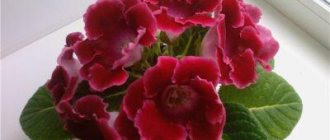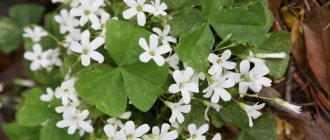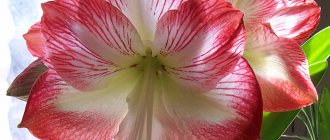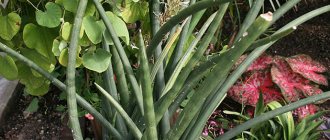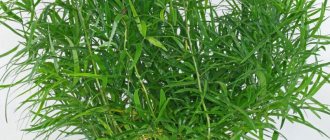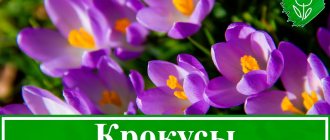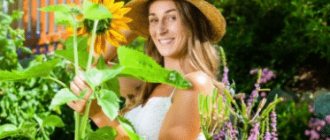The name of this plant was given by Carl Linnaeus - in honor of the Finnish botanist Elias Tillands. Moreover, a rather interesting story played a role in the choice.
Tillandse initially had a different surname - Tillands. But once, as a student, he was traveling from Stockholm to the city of Turku by sea, but on the ship he became so seasick that he decided to get back by road. And in the end, instead of 300 km directly by sea, he had to overcome even 2000 km in length. In memory of this event, he changed his surname to Tillands - “till lands” translated from Swedish means “by land”. Linnaeus knew about this story, and when he described the new plant, he noted that its leaves had many densely arranged scales. The scientist decided that they served to protect against water, so the choice of name fell on Tillands.
The genus Tillandsiya (Tillandsiya) from the Bromeliaceae family (1) (Bromeliaceae) comes from tropical and subtropical regions of South America and has 693 species (2). Some of them are used for food. There are Tillandsias that are bat pollinated (3). But among this variety there are several species that are very popular in home gardening.
In fact, all types of tillandsia are epiphytes, that is, they have a reduced root system to one degree or another and even if there are roots, they are not responsible for feeding the plant. The stems are either very shortened or highly branched. The leaves are arranged spirally, the flowers are collected in spikes or racemes, the bracts are brightly colored, the flowers are bright - red, yellow, blue, cyan, violet or white.
All types of tillandsia can be divided into two groups:
- potted - this includes plants that are grown in pots - they have roots that act as anchors;
- atmospheric - species without roots, that is, true epiphytes that do not need a substrate.
Potted species include such popular species as:
- Tillandsia blue;
- Tillandsia Linden;
- Tillandsia Duera.
However, modern hybrids of potted species are most in demand.
Atmospheric tillandsias include:
- tillandsia xerographic;
- Tillandsia tricolor;
- Tillandsia silver;
- tillandsia ruminaceae;
- Tillandsia usneiformes;
- Tillandsia "jellyfish head"
Types and varieties of tillandsia
Of course, not all species are grown indoors, but there are also plenty of “household” tillandsias.
Blue Tillandsia ( Tillandsia Cyanea). The most popular type from the potted group. The plant is up to 30 cm high. Cereal-like green leaves form a rosette with a red-brown base. During flowering, a flat spike of pink bracts with blue flowers appears from the rosette, which bloom alternately over two months.
Blue Tillandsia (Tillandsia Cyanea). Photo: pixabay.com
Several hybrids have been created based on Tillandsia blue, but the most popular of them is Anit a, with scaly leaves of a grayish tint that form a dense rosette, and the peduncle has lilac or pink bracts and blue flowers.
Tillandsia xerographica . It is best suited for growing indoors - it can withstand the dryness and coolness of winter and the humidity and warmth of summer relatively easily, if you just spray it with warm filtered water every day. It has beautiful wide leaves forming a spherical rosette. With good care, the plant can reach 60 cm in diameter and 1 m in height. It has a miniature Bonsai form. Based on this species, several hybrids have been created, differing in size and degree of saturation of the silver color of the leaves. hybrid is most famous among flower growers .
Tillandsia xerographica. Photo: shutterstock.com
Tillandsia usneoides . It is considered the most decorative type of atmospheric tillandsia. Flower growers usually call it “Icelandic moss”. It has really thin thread-like shoots and tiny leaves with a silvery coating. Looks great on high supports, hanging in a silvery cascade.
Tillandsia usneoides. Photo: pixabay.com
Tillandsia "jellyfish head" (Tillandsia caput-medusae). It is one of the most popular species among gardeners. The plant looks like an onion, with narrow leaves that bend only at the top. The bracts of the inflorescence are bright red, and the elongated flowers are purple. The plant constantly leans down, no matter how it is secured to a support.
Tillandsia "jellyfish head" (Tillandsia caput-medusae). Photo: shutterstock.com
Tillandsia Lindenii. A more graceful plant than blue Tillandsia. Its spike of pink or red bracts is rounded, the leaves are narrower, and the rosette is loose. But the flowers are just as blue.
Tillandsia Lindenii. Photo: globallookpress.com
Tillandsia Dueriana . It is considered the most beautiful view. Its long leaves, like tongues, create a dense rosette. The bracts of the ear are colored yellow, orange and red. The flowers are small, pale pink.
Tillandsia ionantha . _ _ It is very popular in interior decoration because it grows quickly, tolerates low light and is easy to care for - it is enough to spray it 3 times a week. Its leaves, collected in rosettes, form balls of large size and weight. The leaves are grayish-green, during flowering they turn fiery red, burgundy, pink, orange and yellow, and the flowers have different shades of blue or purple, less often white.
Tillandsia ionantha. Photo: globallookpress.com
Flower shops and greenhouses mainly offer hybrids of this type of tillandsia:
- Fuego - leaves turn fiery red during flowering;
- Sumo – leaves take on the color of ripe peach;
- Druid is a very showy hybrid with white flowers and bright yellow leaves;
- Rosita - during flowering, all the leaves turn bright pink, against their background dark purple flowers look impressive;
- Zebrina - distinguished by original transverse stripes; during flowering they turn pink.
Flowers
The photo of tillandsia during flowering captivates with its beauty. But at the same time, it is often bittersweet. On the one hand, this shows that you raised and cared for him correctly and at a good level. On the other hand, it also marks the end of plant life.
It takes many years, but air plants only bloom once, and when they do, the mother plant begins to lose its vigor and deteriorates before dying.
During this die-off period, it will spend all its energy producing as many cuttings as possible for reproduction. Once they have grown to a decent size, they can be separated from the mother plant or left to form an attractive bush.
It all depends on the variety you have, but the flowers themselves can be very short-lived - just a day or so - or they can last a month or more. Despite this, they are often striking, sometimes looking alien-like, but still pleasing to the eye.
Caring for tillandsia at home
Caring for tillandsia is not as simple as it might seem to a novice gardener. It is important to maintain a comfortable temperature, without sudden changes and drafts. For potted species, the air temperature should not fall below 18 °C. Atmospheric ones are more resistant to low temperatures and can withstand even 12 °C.
Priming
To grow tillandsia, prepared soil for orchids is used. When making the mixture yourself, take clay balls, river pebbles, coconut fiber and small pieces of pine or fir bark.
For atmospheric species, soil is not needed - the plants are fixed on a beautiful piece of driftwood or stone.
Lighting
All types of tillandsia love bright light, but with shading from direct sunlight and additional lighting on cloudy winter days.
Atmospheric species suffer least from lack of light. Therefore, they are most often grown in special florariums or decorative vessels and placed even in the back of the room.
The most comfortable window sills for tillandsias are those in the northwestern or eastern direction; in winter, a well-lit window sill in the southern, southeastern or southwestern direction is more suitable for them.
Humidity
For tillandsia, high-quality watering and high air humidity are important. Potted plants are relatively tolerant of dry air, provided that they are sprayed with warm (+5 ° C to air temperature) filtered water every morning. Do not spray if air temperatures are below 16 °C.
Photo: pixabay.com
During the flowering period, spraying is carried out carefully so that water does not fall on the flowers.
Watering is carried out at the outlet, or by immersing the pot with the plant in warm water, and then allowing excess water to drain. From spring to autumn, water once a week, in winter once every 2 weeks.
Atmospheric tillandsias require an air humidity of 80%. At home, this is either daily spraying and a humidifier, or keeping plants in a florarium. Watering is carried out by immersing the plant in water, for which it is removed from the support.
Fertilizers
For cultivation, special fertilizers for Bromeliads are used.
Feeding
Fertilizing is carried out in spring or summer during the active growth phase, spraying the plants with a fertilizer solution once a month. Atmospheric species are not fed, since they use substances from the air for nutrition.
Trimming
Tillandsias do not need pruning - only dried leaves are removed if they appear.
Description
Tillandsia, a member of the bromeliad family, is found in the wild in Chile, Mexico and southern America. This unusual houseplant easily adapts to climatic conditions and can grow in desert areas, rocky areas or humid jungles. The flower received its name thanks to the botanist Ellias Tillandsa, who was among the founders of the Botanical Garden at the Helsinki University of Natural Sciences.
It is almost impossible to describe plants with general definitions, since they are very different. Among the subspecies of exotic flowers there are the most unusual forms. Plants can look like a lichen, a ball of thread, a tuft of feathers, a spike, a vine, or a spiral. The leaves and stems can be dark green, silver, reddish or light green.
During the flowering period, plants produce flower stalks that are not inferior in shape to foliage and stems. The color of the buds can be soft purple, blue, lilac, reddish or green. The flowering period usually occurs in summer, but sometimes plants bloom in winter and autumn. Depending on the type, buds and inflorescences can delight their owners for only a few days, others can last 2–3 months.
The inflorescences are a two-row spike. Among the variety of species, there are plants with complex as well as simple inflorescences, which consist of one or more spikelets. Spike-shaped inflorescences can be dense or loose. The stipules can be arranged spirally or layered on top of each other like tiles. Buds are formed one at a time or several at a time. In atmospheric species, a reduced inflorescence with one bud is most often found.
Most domestic subspecies are monocarpic varieties. After flowering, the peduncle, and with it the leaf rosette, die.
All known forms and subspecies of tillandsia are divided into two subspecies: atmospheric and potted.
The main differences between tillandsia species:
- Atmospheric or gray: almost complete absence of roots, the functions of which are limited to fixing the plant. There is no trunk or stems, the leaves grow from the root. Leaf blades are often modified and covered with scales. The color of the leaves and stems is green-gray or gray. In their natural environment, they prefer to settle on the upper tier of trees.
- Potted or green: these subspecies have a more familiar appearance, the leaves are collected in dense rosettes, the color is dark green or light green. The shape of the leaves is elongated-lanceolate, lily-like. In the wild they grow on the lower layers of trees, fallen trunks or on the ground surface.
The root system of atmospheric tillandsia serves primarily not to feed the plant, but for anchorage. With the help of thin but strong roots, the flower clings to bark, moss or other support. Therefore, such plants are not watered, but sprayed. Moisture is absorbed not by the roots, but by the leaves.
Reproduction of Tillandsia at home
Tillandsia can be propagated in two ways: by seeds and by children.
Seeds. This is a labor-intensive and lengthy process. Sow the seeds in a bowl, cover with glass and place in a warm, well-lit place. Every day the glass is removed and wiped from condensation. The seeds germinate quickly, but then the seedlings grow very slowly and begin flowering after 7-10 years.
Children. This type of reproduction is more efficient. As soon as flowering ends, the plant dies, and its children are separated and planted for rooting in a mixture of peat and sand (1:1). If the plant had only one child, then simply cut off the mother plant, leaving the child to develop in the same soil.
Atmospheric tillandsias are even easier to propagate - bunches are separated from the plant and secured on a support with moist sphagnum.
Spreading
The air plant can be propagated by seeds, which it can produce at the end of its life cycle, but this usually only works if you have several air plants blooming at the same time so that they can pollinate each other.
In addition, there are special requirements for germination as well as for plant survival into adulthood.
Instead, it will be much easier if you skip all this and wait until the cuttings form at the base of the mother plant. You can leave them so that they form a nice clump, or instead, when they are almost a third smaller than the mother plant, you can carefully separate them and treat them as individual plants.
Replanting tillandsia at home
After purchase, tillandsia must be replanted in special soil, since in the store it is sold in a pot with peat. However, if you bought a flowering plant, then you need to wait until flowering is complete, separate the children and plant them in pots with special soil. It is better to buy a pot in the shape of a bowl, wide and shallow.
Photo: pixabay.com
Atmospheric species are attached to a decorative support with inserts made of coconut fiber or sphagnum. The support is placed in a glass pot with drainage holes so that excess water drains naturally.
Are air plants poisonous?
The good news is that tillandsias are not poisonous to people or most pets such as cats and dogs. The bad news is that their unusual appearance can attract playful and curious pets.
Don't let your pets play with them as their delicate size can cause them to be easily damaged.
Tillandsia pests
Bromeliad scale. It is this that most often affects tillandsias. First, translucent yellow-brown plaques appear, then a dirty coating on the leaves and orange spots. Leaves become limp and eventually die.
With a small number of pests, it is enough to wash the plant 2-3 times with soapy water. However, in case of severe infection, it is necessary to use Aktara (4) both for spraying and watering the substrate. Repeated treatment of the plant with neem oil gives good results.
Possible problems
The main difficulties when growing tillandsia:
- gray and brown spots on leaf blades indicate a fungal infection. The plant is treated with a fungicide;
- white coating on the leaves, the plant withers - hard or cold irrigation water was used;
- leaf blades turn yellow, curl, die - a signal of insufficient watering;
- loss of foliage, loss of turgor, delayed flowering indicate a sharp change in temperature or lighting;
- the tips of the leaf blades acquire a brown tint - the temperature in the room is too low, or watering was carried out unevenly;
- the leaf blades turn brown, the rosette falls apart - excessive watering.
